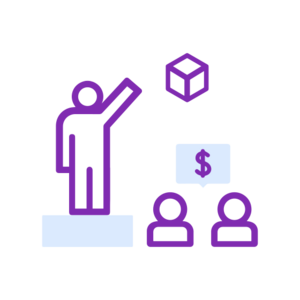What is a Safe Note?
A SAFE note, also known as Simple Agreement for Future Equity, is a convertible security that provides investors with the option to purchase shares at a future price when the company raises more rounds.
The SAFE note was created by Y Combinator in 2013. Y Combinator is a seed-stage accelerator that helps technology companies to reach greater heights. It incubates companies for three months through a program of educational workshops, and one-on-one mentorship. This culminates in a series of Demo Day events in Silicon Valley to showcase the companies to investors.
Y Combinator invests a small amount of money and takes a small amount of equity. In exchange, they help the company find a way to make it successful. Over 1,000 startups have been funded by Y Combinator since 2005, including Dropbox, Reddit, CoinBase, Airbnb and Stripe.
SAFE notes were created by YC to fund most seed-stage startups without interest rates or maturity dates. Ever since 2013, most early-stage startups and Non-YC startups have also issued SAFE notes as a way to raise money.
A SAFE note overcomes many of the shortcomings associated with convertible notes. The most significant difference is that, unlike convertible notes, the SAFE notes are not debt and do not accrue interest. In the following section, we will outline all the differences between a SAFE note and a convertible note.
SAFE notes can be issued in four different scenarios:
- A valuation cap, but no discount
- A discount, but no valuation cap
- A valuation cap and a discount
- No valuation cap and no discount
SAFE note vs Convertible note
Before we take a look at the differences, let us first take a look at the similarities between a SAFE (also known as Simple Agreement for Future Equity) note and a Convertible Note.
They are both popular early-stage financing methods that offer future equity to investors in exchange for present-day cash.
Recent years have seen an increase in the popularity of SAFE notes, especially among Silicon Valley investors. Convertible notes are still in use today, even though they were common in earlier decades.
Both SAFE notes and the Convertible Notes are agreements that convert into shares of preferred stock at the end of a financing round or other “triggering” event. However, SAFE notes have a few notable differences, such as:
Pros of using a SAFE Note
- Debt
A convertible note is a loan that must either be repaid through cash or shares. It gives a potential investor a right to convert a note into equity (stock) at a certain price (conversion price) after an option period. Simple interest rates for convertible debt can range from 2 percent to 8 percent (most falling around 5 percent). Whereas a SAFE note is not a debt instrument, therefore the company does not have to worry about accruing debt
- Timeline
Similar to loans, convertible notes also have a maturity date. This means that after a given period of time, the convertible note converts or must be repaid to the investor. SAFE notes, on the other hand, can be held until the next round of funding is raised.
- Interest
Taking into account that loans have interest, the company should not only repay the principal amount but also the interest or provide the investor with a greater share of ownership than they originally bought. Meanwhile, since the SAFE note is not a debt, it does not carry interest.
- Complexity
A convertible note is much more complicated and has a lot more paperwork as well as many terms, conditions, and provisions that would be difficult to comprehend for first-time founders. Due to this, SAFE notes are preferred since they are straightforward and easy to understand.
- Negotiation
As SAFEs are so simple, there are few terms to negotiate, allowing for clear and concise communication throughout. It is mainly because there are no end dates or interest payments to worry about, unlike the case where a convertible note is involved. In practice, the only items that need to be negotiated are the discount rate and the valuation cap.
- Investor-friendly
The fact that SAFE notes are convertible into preferred stock is a big incentive for investors to use them. Furthermore, investors might end up with even better benefits than they initially thought.
Expected drawbacks when using a SAFE Note
Despite their many advantages, SAFE notes also have a few drawbacks you should know about:
- Risk
Due to the fact that SAFE notes are converted to equity only when the startup is able to raise funds for its next round, it carries a small amount of risk for investors. There is a chance that an investor's investment may never be converted into equity. If this happens, investors are left with very little for their initial investment.
- Revenue
Convertible notes have the advantage of generating revenue in the form of interest payments, which is one of the advantages over SAFE notes. Since SAFE notes are not loans, the company does not pay interest on them.
- Dividends
Common shares provide investors with dividends as the company increases its performance. In general, SAFE notes do not pay dividends, since their reward should be equity.
- Incorporation
In order to make use of SAFE notes during negotiations, a business must be incorporated. Some businesses may choose to form a limited liability company instead. A company may have to go through additional procedures to restructure and become incorporated before it can issue SAFE notes.
What is the purpose of SAFE Notes? Explained with an Example
When a startup is just getting started, it's hard to assign value to the company since there is little information and data about it. The SAFE note promises equity to an investor at a future date, allowing the issuer to postpone the valuation of a company to a date when they will be better able to value the company.
Here's a look at the basic steps that take place when utilizing a SAFE note for your startup:
- An angel investor provides seed money in exchange for a SAFE note (future equity).
- Using the original investment, you build a startup.
- After certain progress has been made, you find another investor and your startup gets a post-money valuation.
- Based on this information, you determine the new price per share for the startup.
- Using the share price, you convert the SAFE notes into the relevant number of shares in the startup, and then distribute them to the SAFE investors.
Consider, Robert is the co-founder of a health tech startup and has developed a mindfulness app. In order to get the product off the ground, he is now seeking seed funding from angel investors and accelerators.
A seed round is an important early-stage round of funding that typically occurs in a startup after a founder has identified a problem and has an early prototype for a solution. It is the first real investment in a business and is typically used to improve the prototype and to add additional marketing and sales capabilities to help find product-market fit.
In exchange for this investment, investors demand something of monetary value. This is usually equity or the promise of equity in the future. Now Robert has two options available to him, a convertible note or a SAFE note.
While SAFE notes and convertible notes can both convert to equity, a convertible note permits you to change your current round of stock.
A convertible note is called "convertible" because the note owner will have the option to convert the note into the common stock of the company after it receives funding or some other trigger event.
In this case, Robert decides to opt for a SAFE note since he is not willing to pay the interest on his convertible debt. Using SAFE is simple and easy, there is no dilution of existing shares, and it is not as time-consuming as other methods. In addition, since his investors preferred straight equity, they were satisfied with this deal.
Following the seed round, Robert uses the funding to improve the product and add new features. Upon achieving a product-market fit, Robert plans to raise a Series A round in order to further market his product and hire new employees.
On the basis of the post-money valuation, Robert calculates a new price per share for the company. Once Robert has determined the price per share, he then converts the SAFE note into a certain number of shares to be distributed to the SAFE investor.
By using a SAFE note, Robert was able to raise funds during the early stages of his startup and then offer shares to his investor after it has been valued in the subsequent round. This is a win-win situation for both Robert and his investor!




 Startup
Startup











